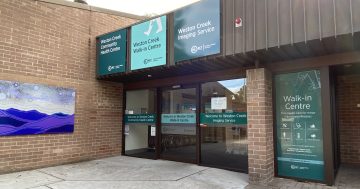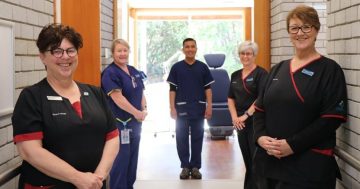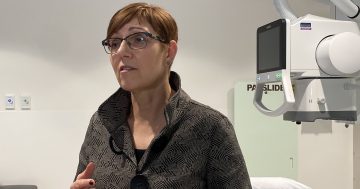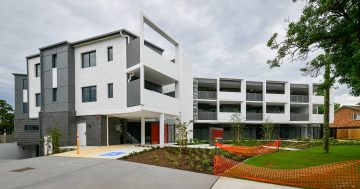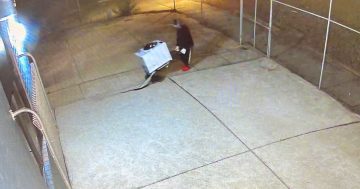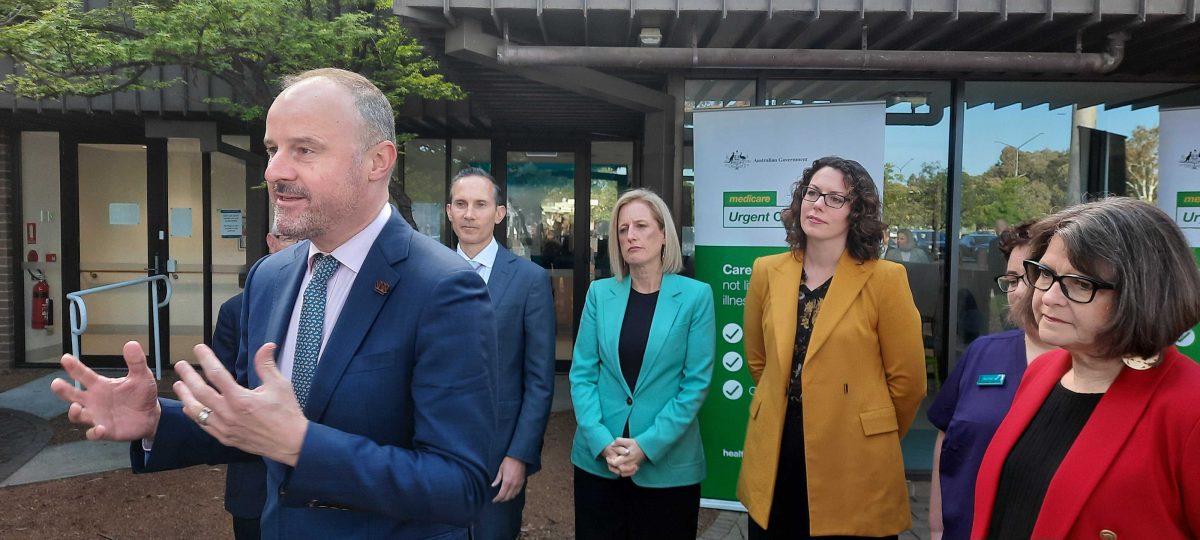
Chief Minister Andrew Barr at the Weston Creek Walk-in Centre with local MPs Andrew Leigh, Senator Katy Gallagher and Alicia Payne, Weston Creek Walk-in centre manager Rachel Backhouse and federal Assistant Health Minister Ged Kearney. Photo: Ian Bushnell.
The nurse-led Walk-in Centre will become even more of a local health hub as part of the new national network of Medicare Urgent Care Clinics being established by the Commonwealth to make it easier for people to receive walk-up, bulk-billed medical treatment.
Under a $7 million deal with the Albanese Government, the five centres will join the national network and the ACT Government will be able to fund more staff and expand their services.
The seven-day-a-week Walk-in Centre network – which treats non-life threatening, low-level complaints – will be boosted by three Nurse Practitioners and three Advance Practice Nurses, and will receive new equipment to treat a wider range of conditions.
This includes slit lamps and tanometers for eye examinations and removal of foreign objects in the eyes, handheld ultrasound machines for examination of lacerations and other wound types, and a vascular doppler for investigating blood flow.
The Weston Creek Walk-in Centre next to Cooleman Court will also be able to offer physiotherapy and extended X-ray and ultrasound services.
An advanced-scope physiotherapist will be able to treat patients with musculoskeletal injuries and provide online assessments and support for nursing staff in other Walk-in Centres.
A radiographer and sonographer for the Weston Creek Medical Imaging Service, which shares the Walk-in Centre building, will provide after-hours imaging.
There are plans for services to expand even further to include treatment for shoulder injuries, male urinary tract infections, injury in pregnancy and screening for sexually transmitted infections.
Recruitment and the purchase of new equipment are underway, and Canberra Health Services expects the full scope of additional services will be available from early 2024.
At an announcement this morning at the Weston Creek Walk-in Centre, ACT Senator Katy Gallagher said doctors should not feel threatened by the latest expansion of services at the Walk-in Centres, which were established in 2010 to help ease the pressure on overwhelmed emergency departments.
Senator Gallagher said there was more than enough work to go around and they could operate alongside each other.
“It’s more about making sure Canberrans have access to health care rather than taking work off others,” she said.
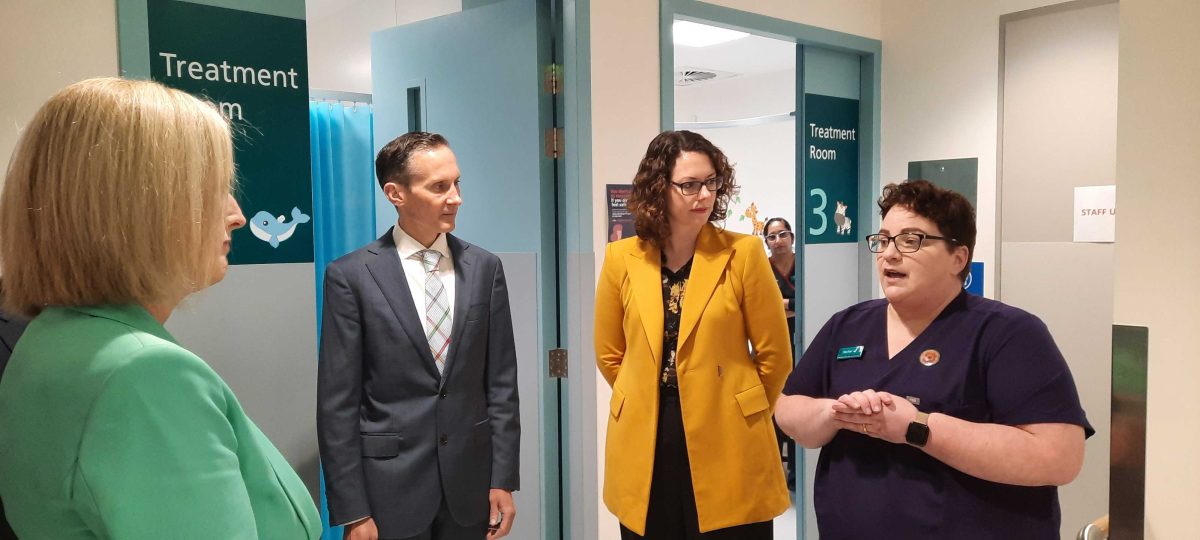
One-stop shop: Weston Creek Walk-in Centre Manager Rachel Backhouse talks to Senator Gallagher, Dr Leigh and Ms Payne about the benefits of the Centre.
Extending services would also mean fewer people turning up at emergency departments for non-life-threatening conditions.
Figures from the just-published Canberra Health Services 2022-23 annual report show the ACT’s emergency departments continue to struggle, failing to hit their own treatment targets.
CHS aims for 80 per cent of Emergency category patients to be seen within 10 minutes, but emergency departments only achieved 71 per cent, while only 38 per cent of Urgent patients were seen within 30 minutes, well short of the 75 per cent target, and just 49 per cent of Semi-urgent patients were seen within 60 minutes instead of the desired 70 per cent.
Senator Gallagher said the Walk-in Centres were popular and doing their job, but in a growing city like Canberra, emergency departments would still face pressures, as was the case around the country.
“You’ll see from the statistics in their health performance report there is a very reasonably low rate of referral from the Walk-in Centres to the emergency department,” she said.
“So that says to me that they are meeting a need in the community and that they are able to meet those low-urgent, low-acuity issues.”
Chief Minister Andrew Barr said the boost to Walk-in Centres would continue to help steer people away from emergency departments.
Mr Barr said the ACT was investing in community health centres and a new emergency department at the Canberra Hospital and in the Northside Hospital, formerly Calvary, to meet demand.
But he also said the ACT had yet to recover from the 2014 Hockey budget that “savaged” hospital funding.
“Finally, now the Federal Government is prepared to work with the states and territories to invest in primary health care, to strengthen Medicare and to invest in hospitals,” he said.
“I haven’t seen that for 10 years, and I didn’t expect this federal government in its first 18 months in office to be able to fix 10 years of neglect from the federal Liberals, but they’re making a start.”
But the Canberra Liberals accuse the Barr Government of cutting health funding itself, including proceeding with a less ambitious Canberra Hospital expansion, to pay for other initiatives.
The Commonwealth has now established 30 Medicare Urgent Care Clinics – a combination of existing general practice clinics, community health centres and Aboriginal Community Controlled Health Services – and is aiming for 58 across the country.












